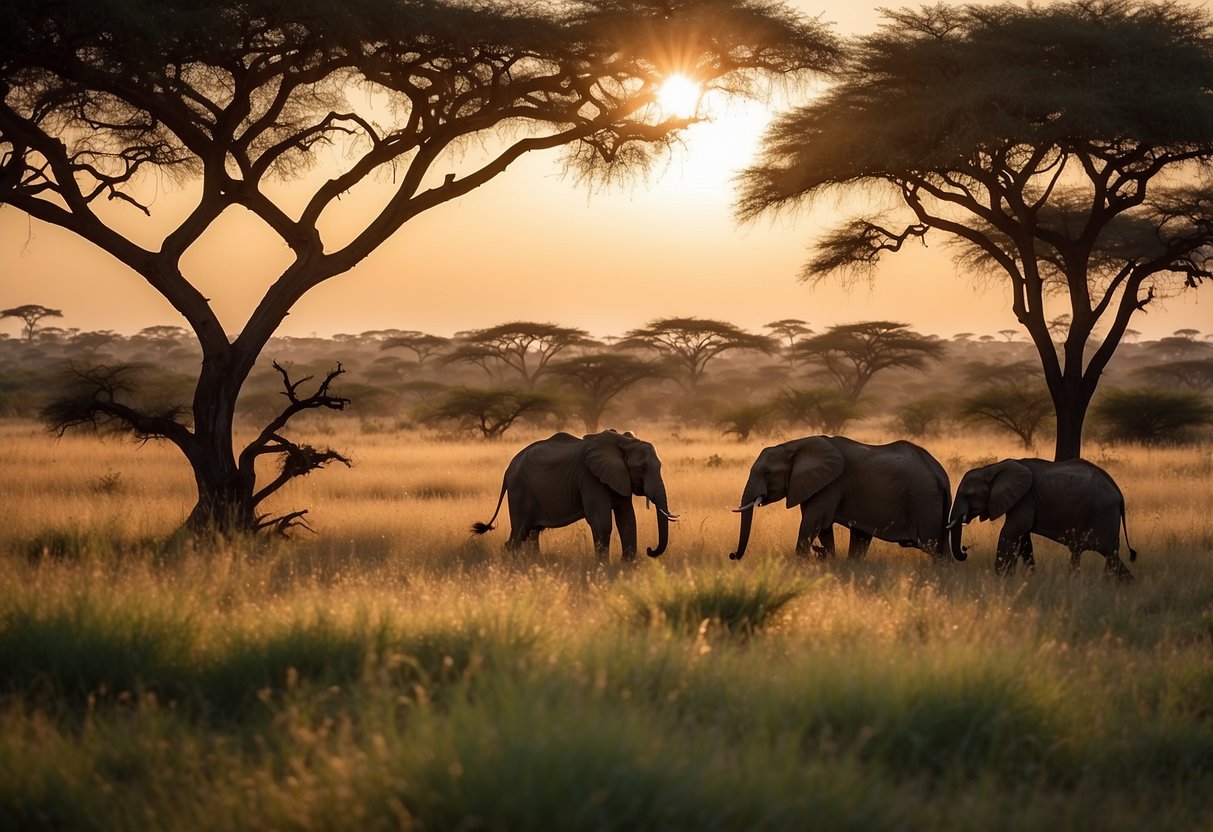
Navigating the Serengeti
Navigating the Serengeti National Park requires careful planning. This involves decisions about transportation, understanding park logistics, and paying close attention to safety regulations.
Transportation and Logistics
Travelers often access the Serengeti via Kilimanjaro International Airport, followed by a drive or a domestic flight to one of the park’s airstrips. Inside the park, guided safari vehicles, usually 4x4s, are the primary mode of transportation.
Self-drive safaris are less common due to the challenging terrain and the need for detailed knowledge of park routes. Tour operators and safari guides often handle these logistics, ensuring visitors can focus on wildlife sightings. It’s advisable to book transportation well in advance, especially during peak seasons. The park’s vast landscape means efficient planning is essential to maximize wildlife viewing opportunities and minimize travel time between key areas.
Safety and Regulations
Safety in Serengeti National Park is paramount. Travelers should always stay inside the vehicle when in the park and follow the guidance of their safari guide. Approaching or feeding wildlife is strictly prohibited. These rules protect both visitors and animals, maintaining the park’s ecological balance.
It is also crucial to understand the rules about camping and night-time activities. Only specific areas are designated for these purposes. Licensed guides are trained to handle emergencies and communicate with park authorities. Visitors should carry basic first aid supplies and ensure vaccinations are up-to-date. Adhering to these regulations ensures a safe and enjoyable safari experience.
Serengeti’s Geographical Wonders
Located in northern Tanzania, the Serengeti is celebrated for its diverse landscapes and unique geographical features. It presents a mix of stunning habitats, landmarks, and rivers that are essential to any African safari adventure.
Unique Habitats and Landscapes
The Serengeti spans 30,000 square kilometers and includes a variety of habitats such as grasslands, woodlands, and savannahs. The ecosystem ranges from the open plains of the southern Serengeti to the hilly, wooded areas in the north. Each habitat supports different species of wildlife, making the region incredibly biodiverse.
Kopjes, rocky outcrops scattered throughout the plains, offer vital shelter for animals like lions and leopards. These formations provide vantage points for predators and resting spots for other creatures seeking refuge from the heat. The southern plains are known for their nutrient-rich volcanic soil, making them perfect for supporting large herds of herbivores.
Famous Landmarks and Rivers
The Serengeti is home to several famous landmarks and vital rivers that sustain its wildlife. The Mara River, flowing from Kenya’s Maasai Mara into the Serengeti, is a key feature of the Great Migration. Every year, millions of wildebeests and zebras cross its crocodile-infested waters in a dramatic survival challenge.
The Ngorongoro Crater, located on the eastern edge of the Serengeti, is a massive volcanic caldera filled with rich wildlife. It’s one of the best places in Africa to spot the Big Five. Additionally, the distant, snow-capped peak of Mount Kilimanjaro can be seen from some vantage points in the Serengeti, adding to the region’s breathtaking views.
Seasonal Considerations
When planning a Serengeti safari, it is essential to understand how the different seasons affect both the experience and animal behavior. The Serengeti experiences a dry season and a wet season, each bringing unique aspects to consider.
Dry Season Versus Wet Season
The dry season, typically from June to October, is characterized by lower rainfall and cooler temperatures. This season offers better visibility for wildlife viewing, as the vegetation is less dense. Traveling becomes easier, too, with roads being more navigable and less muddy.
On the other hand, the wet season, usually from November to May, brings lush landscapes and abundant water sources. Rainfall peaks lead to greener surroundings, which makes the scenery breathtaking. This season also sees fewer tourists, offering a more tranquil experience.
Animal Behavior and Water Sources
During the dry season, animals congregate around dwindling water sources. This behavior increases the likelihood of spotting various wildlife species, particularly near rivers and waterholes. Predators, such as lions and cheetahs, are more active as prey is more concentrated in these areas.
In contrast, the wet season sees animals dispersing as water becomes abundant throughout the region. Animals, including migratory birds, thrive, and calving season for wildebeest usually falls within this period. This dispersal can sometimes make sightings less predictable but offers a unique opportunity to observe different species in their natural habitats.
Understanding the seasonal variations in the Serengeti can make a significant difference in planning an unforgettable safari adventure.